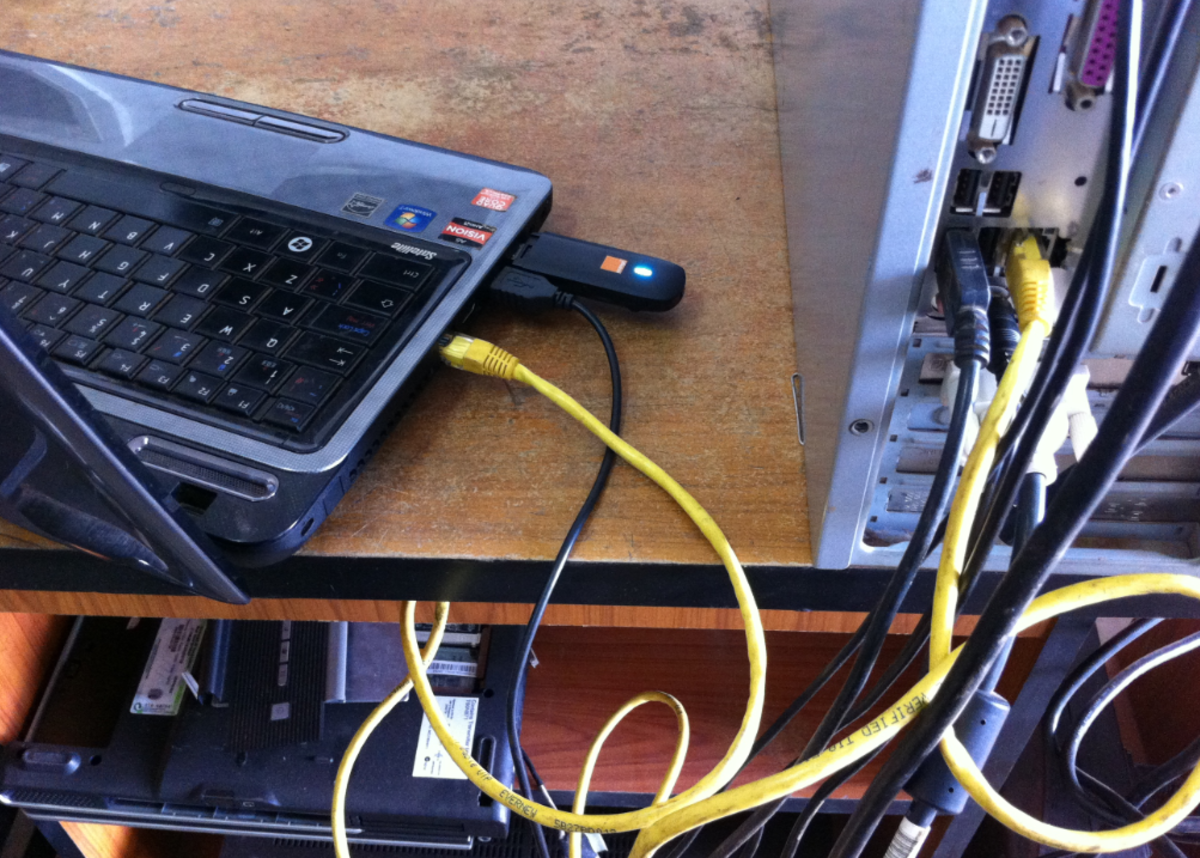Skills Needed to Be a Successful Noninvasive Cardiovascular Technologist
Introduction
Perhaps you are considering a career path as a cardiovascular technologist and are wondering if you are fit for the field of cardiovascular technology. May be you are certain this is the healthcare career you want to pursue but are unsure if invasive or noninvasive is better suited for you. May be you are simply curious, as to how someone could be successful in a variety of fields within the world of healthcare. In this article, some of the personality traits and skills necessary to be a successful noninvasive cardiovascular technologist are discussed. This article's focus will be more on the skills and personality traits people were born with (or can develop with time), rather than the education and skills that are obtained in the training process.
Ability to work independently with minimal supervision is quite necessary
One of the major differences between invasive and noninvasive cardiovascular technologists (besides how they help diagnose cardiovascular diseases) is that invasive cardiovascular technologists tend to work with other invasive specialists and cardiologists during procedures, whereas noninvasive specialists often work in a room alone with the patient. The noninvasive specialist does work with cardiologists to discuss the findings of diagnostic procedures (ex. echocardiogram, stress echo, etc.), although the noninvasive cardiovascular technologist will typically be one-on-one with patients during procedures. If working besides other people during a procedure as part of a team sounds more appealing than working one on one with a patient, following the invasive path is probably a better idea.
Having a "go getter" attitude and self-motivation are must-haves
Being able to work with minimal supervision goes hand-in-hand with being a self-motivated individual with a go getter attitude, although having these traits are especially necessary when working as a noninvasive cardiovascular technologist. This is because patients of noninvasive cardiovascular technologists are there for more routine tests and aren't asking to meet with a specific person. Noninvasive specialists really have to go to the patient themselves (as sometimes they must go to a hospital room), as opposed to the patient going to them. If you are the kind of person who would rather have patients assigned to them or have the patient be assigned the room you are to be in, going the invasive route may be the better solution.

You should be computer savvy and enjoy working with computers
For most jobs in the digital era, being unable to work with computers efficiently will not get you very far in most fields. While being C++ literate or knowing how to use keyboard shortcuts to do a variety of computer tasks aren't vital to being a successful cardiovascular technologist (although it can't hurt knowing how to do those things anyways), being able to operate computers to do a variety of tasks is very useful as a cardiovascular technologist. Noninvasive specialists work with sonography machines that are essentially specialized mobile computers. They also work with word processing programs to type up reports that are to be sent to the cardiologist (although invasive specialists also sometimes write up procedure reports as well). If working with computers for a good majority of the day sounds less appealing than doing more hands-on work that involves moving around frequently, being an invasive specialist may be more ideal for you.
There's one shade of black and white, the rest is gray
Do your friends and family members accuse you of being indecisive? Are you capable of easily understanding other people's points of view and their reasoning behind such? When it comes to making a final decision, do you require having all of the information at hand or as much as possible? In the world of noninvasive cardiovascular technology, much of the work involved revolves around the interpretation of what is seen in an echocardiogram (or other types of procedures). Noninvasive cardiovascular technology involves questions, such as "To what degree does this patient have mitral valve stenosis (calcification)?" and "How mild or severe is this patient's pericarditis (inflammation of pericardium cardiac tissue)"? Being okay with leaving room for interpretation on a procedure's findings is important with noninvasive cardiovascular technology.
If you find you're the kind of person who likes having more certainty in their work or prefers to base decisions on select factors, invasive cardiovascular technology is probably a better route to follow.

Ambidexterity is a bonus
You may be wondering "what on Earth does being able to use both hands have to do with being a noninvasive cardiovascular technologist?" Great question. The reason for this is that a lot of hospital rooms are set so the patient bed is closer to the right side wall. This means there is little or no room for healthcare staff to sit bedside on the patient's right side, let alone let medical equipment be on the patient's right side. In other words, this requires the ability to use your left hand in order to hold the transducer probe and the right hand to press the buttons on the ultrasound machine.
While this skill may be acquired with time and usage of your left hand if you are strictly right-handed, it certainly helps to already know how to be coordinated with both hands. Some hospital rooms are set up so that the beds are mainly closer to the left side walls and the specialists (and thus medical equipment) sit on the patient's left side. However, when looking for any kind of job, it should be based upon what the company is about, your education and skill set, whether you like the overall work environment, etc., not on how the room is set up and where the equipment is based within the facility's rooms. If learning how to use both hands is a skill you feel you do not possess (and probably won't learn to possess if you do not), the invasive track may be more suited for you. However, some of the tools used in the cath lab are primarily designed for right-handed users, so those who are more left-handed may struggle here at least somewhat.
Image Editing Vocabulary
Brightness: the relative level of light within an image.
Contrast: difference between the darkest and lightest areas of a picture.
Gain: an image setting used to "increase" or "decrease" the amount of lighting within a photo (think of images with more "dots" and might look dirty [high gain] or less "dots" and may look clean [low gain]).
Resolution: an image's level of detail portrayed adjustable by changing various settings.
Great photo-editing skills goes a long way
If you enjoy editing photos in say Adobe Photoshop (or with other programs of the sort) as a hobby yet do not want to pursue a more artistic career (are more interested in pursuing a science-related field), this is a very useful skill to possess as a great noninvasive cardiovascular technologist. Now you may be wondering how in the wonderful world a skill useful for graphic design is in the least bit relevant to a healthcare career. The reason for this is that being able to adjust an image's settings are used to optimize an echocardiogram's images. Anyone who enjoys editing photos (and is skilled at it) knows how lack of brightness, horrible contrast and too much gain in images can affect how much detail is portrayed in a photo. It is also not possible to have the same exact photo be retaken in better lighting without something being slightly different than before unless you go back in time (in other words, you must work with what you are given and make the most of it). Being efficient in knowing how to manipulate a photo's overall resolution does have an enormous impact on the turnout of an echocardiogram's images.
Poor image quality on echocardiograms can drastically affect a patient's care, as bad images can give the impression everything is normal when there may in fact be an abnormality present (or give the impression something is there that really is not)! If you are already skilled with editing photos to increase the quality of them (be it that you are a professional photographer or simply enjoy creating digital artwork for fun), it will be that much easier to become a fantastic "echo tech". If editing the way images generated by a machine appear (which believe it or not is a good deal of a noninvasive specialist's job) and are a more hands-on type of person, invasive cardiovascular technology may be the better route for you.
Scatter-brainedness can be a great thing (if used appropriately)
There are a generous amount of articles found in magazines, websites, newspapers, live news media reports, etc. and plenty of teachers who complain about a student's inability to focus on one topic at a time. Of course, plenty of people may recommend people who are thought to have ADHD or similar, such as Low Latent Inhibition, to be put on medications to help them focus or tune out external stimuli "irrelevant" to the task at hand. What is not often talked about is the possibility that being "scatter brained" can in fact be a good thing, provided it is used appropriately.
Being a noninvasive cardiovascular technologist does require the specialist to be capable of focusing on the task at hand. At the same time, it is very helpful to be able to pick up on several details at once. Looking for one thing at a time can be rather time-consuming and important details can be overlooked if overly focused on looking for one specific thing. The capability to pick up on multiple stimuli and things catching your attention rather easily (such as the lawn being mowed outside while sitting in class, or that cute guy/girl staring at you from across the room) is a great skill to have as a noninvasive cardiovascular technician. Echocardiogram sonographers must be able to pick up abnormalities in sound patterns when listening to heart sounds produced by the ultrasound machine.
With all this being said, it is not a good idea to let yourself be distracted by someone walking in the hallway to the point where it inhibits your work performance. Instead, channel this higher level of mental attentiveness to your surroundings to be more aware of the various things occurring within the images of the echocardiogram and also of the patient's behaviors and whatnot. If you find yourself in need of having a more dramatic environment with more physical stimulation going on in your surroundings or find yourself wanting to do things in a "step by step" process, you may want to think twice about going the invasive track instead.
Which track in cardiovascular technology interests you more (or in which are you currently a specialist?)
Summary
Invasive and noninvasive cardiovascular technologists are very similar in the sense that they both assist cardiologists in diagnosing and treating cardiovascular diseases. The ideal personalities and skill sets someone should already possess for either track do however differ greatly in some respects. You may be more suited for the noninvasive track if you are able to work independently, have a go-getter attitude with no self-motivation issues, like working with computers, are more flexible in handedness, enjoy editing images, and are able to pick up on multiple details at once. Being able to think in terms of 3D is a major bonus in being a great cardiovascular technologist. Whichever track you decide to pursue, know that both invasive and noninvasive specialists are of equal importance to a patient's health care and it's important to understand the procedures performed by specialists of both tracks.







